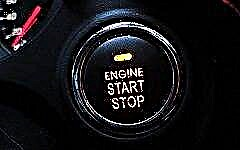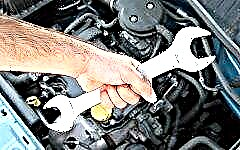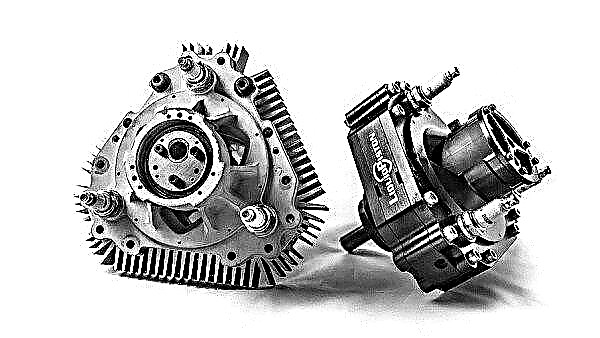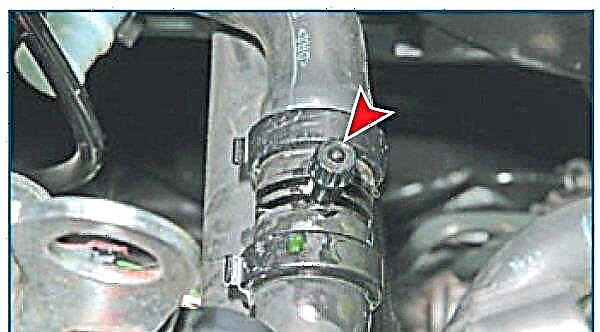Installing a heater on a Renault Logan can solve many problems with one outlet. For installation, of course, you will need a certain set of tools that almost every car owner has.

The content of the article:
- Choosing a heater
- Installation process
How to choose a heater for Renault Logan
The capacity of the Renault Logan 1.4 engine cooling system is about 3.3 liters. In order to warm up such a volume, 1.5 kW is enough. Therefore, it is not worth buying a more powerful one. Of course, it will heat up faster, but it's not worth it. It also makes no sense to buy with fanfare, because the tie-in points on Logan 1.4 are located very close, that is, there will be no point in forced circulation.
How to install a heater on Renault Logan 1.4
So, we will look at the Alliance kit. This is the most common option because it is distinguished by its quality and cheapness. The principle of its operation is outrageously simple: cooling liquid flows into the lower pipe by gravity, which, by convection, rises into the upper pipe when heated.

The main problem with this engine is that the thermostat in it cuts off the upper pipe, which makes it impossible to insert into it. Therefore, a pair of stove nozzles is used. Many people say that in this way, heating will only warm up the heater radiator, which is greatly mistaken. The resistance of the radiator is so high that it cannot be forced through by convection, so the heated coolant moves into the cylinder block.
With this method of installing the heater, the liquid during heating moves in the opposite direction to that in which it flows during engine operation. That is, when heated, the liquid is taken from the return pipe from the stove, and then the heated liquid goes into the supply pipe to the stove. But we have already talked about the resistance of the radiator, so it goes to the engine block. It's simple. When we start the engine, the check valve on the heater prevents the coolant from circulating through it. On the other hand, at the entrance to the heater, the liquid comes from the radiator, here the pump pulls in itself, respectively, there can be no talk of any kind of airiness.
One important point. The fact is that most kits come with different types of tees. We will need the middle one, but the problem is that we need another one, hence the logical conclusion - to purchase it in advance.
We proceed directly to the work. First of all, we remove the crankcase protection. Two bolts 13, four bolts 10. With the first, be extremely careful - very easy to roll. If there is a semiautomatic device nearby - there is nothing to be afraid of - you can always weld on the studs.

Next, we prepare a container for antifreeze, unscrew the clamp on the lower radiator pipe. after which we pull it off. We drain the antifreeze, it is advisable to unscrew the plug on the expansion tank. It is this heater that is best installed on the battery frame. Of course, the mount from the kit must be bent, cut off with a grinder, but this must be done with everyone. As for the location, the heating must necessarily be below the point of intake from the block, that is, below the branch pipe. That is why you should not bump into the lower radiator pipe - then you simply will not be able to correctly install the heater case in the right place. There is plenty of it under the hood on Renault Logan 1.4.
Be sure to put all connections on the sealant, cut the pipes, cut in as described above with the fulfillment of the conditions described below.
The direction of the tee of the liquid intake is unimportant, it will still flow into the heating. But it will be difficult to push through the heating if you turn the tee towards the stove. Therefore, we take the spring from the kit, stretch it to the required length, insert it into the heated liquid supply pipe, and then turn it out towards the block. In general, everything is logical and simple, the spring is needed in order not to bend the pipe.

After the heating is installed on Renault Logan 1.4, it is necessary to fill in antifreeze. To do this, remove the cap from the air connection and fill in antifreeze. A five-liter canister will be enough. If you look closely into the fitting, then when you reach the "MAX" mark in the expansion tank, antifreeze will appear in it. Now it remains to start, warm up, check the operation of the stove, if necessary, bleed air from the system. On this, heating is installed on Renault Logan 1.4.
Renault











